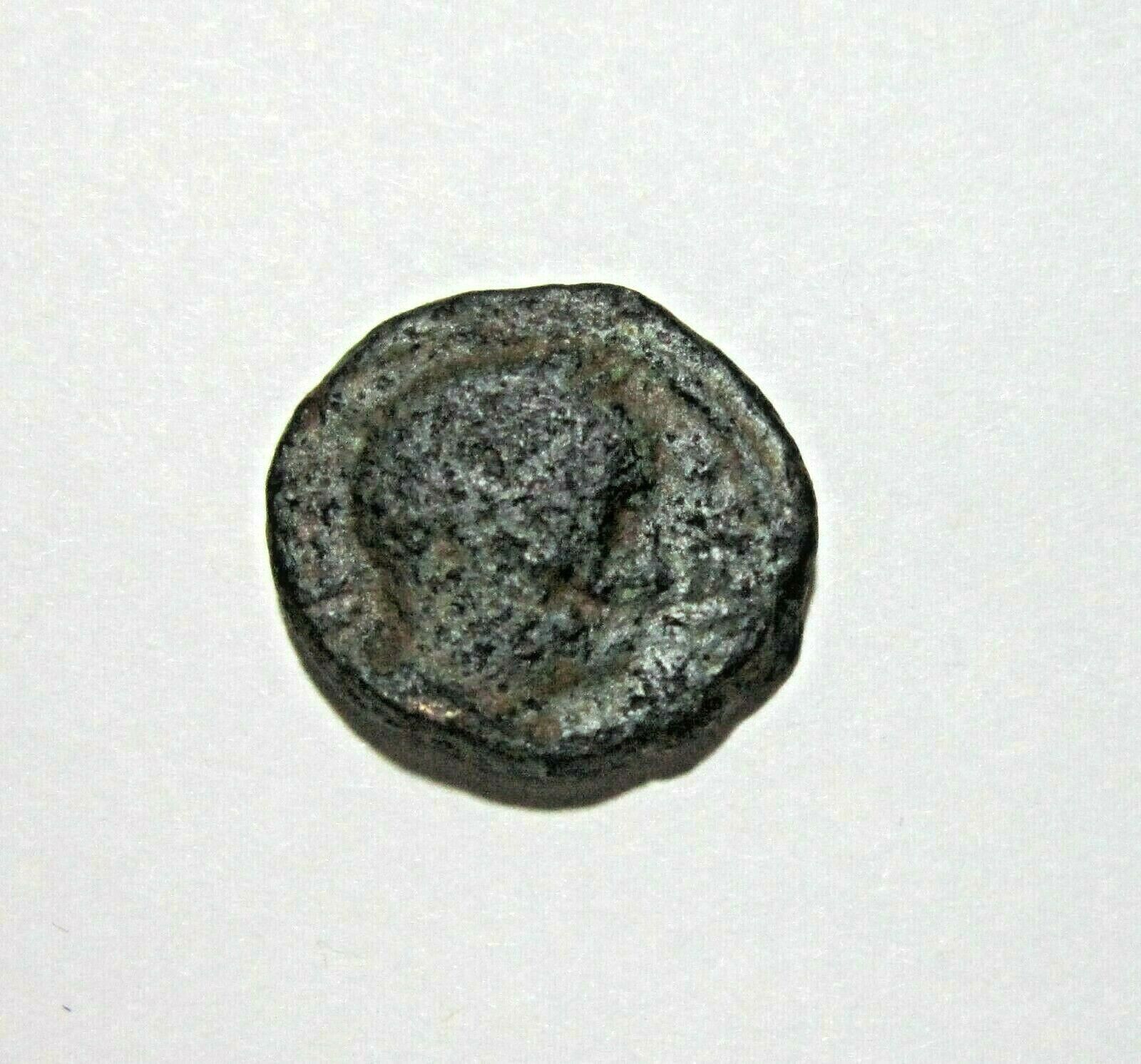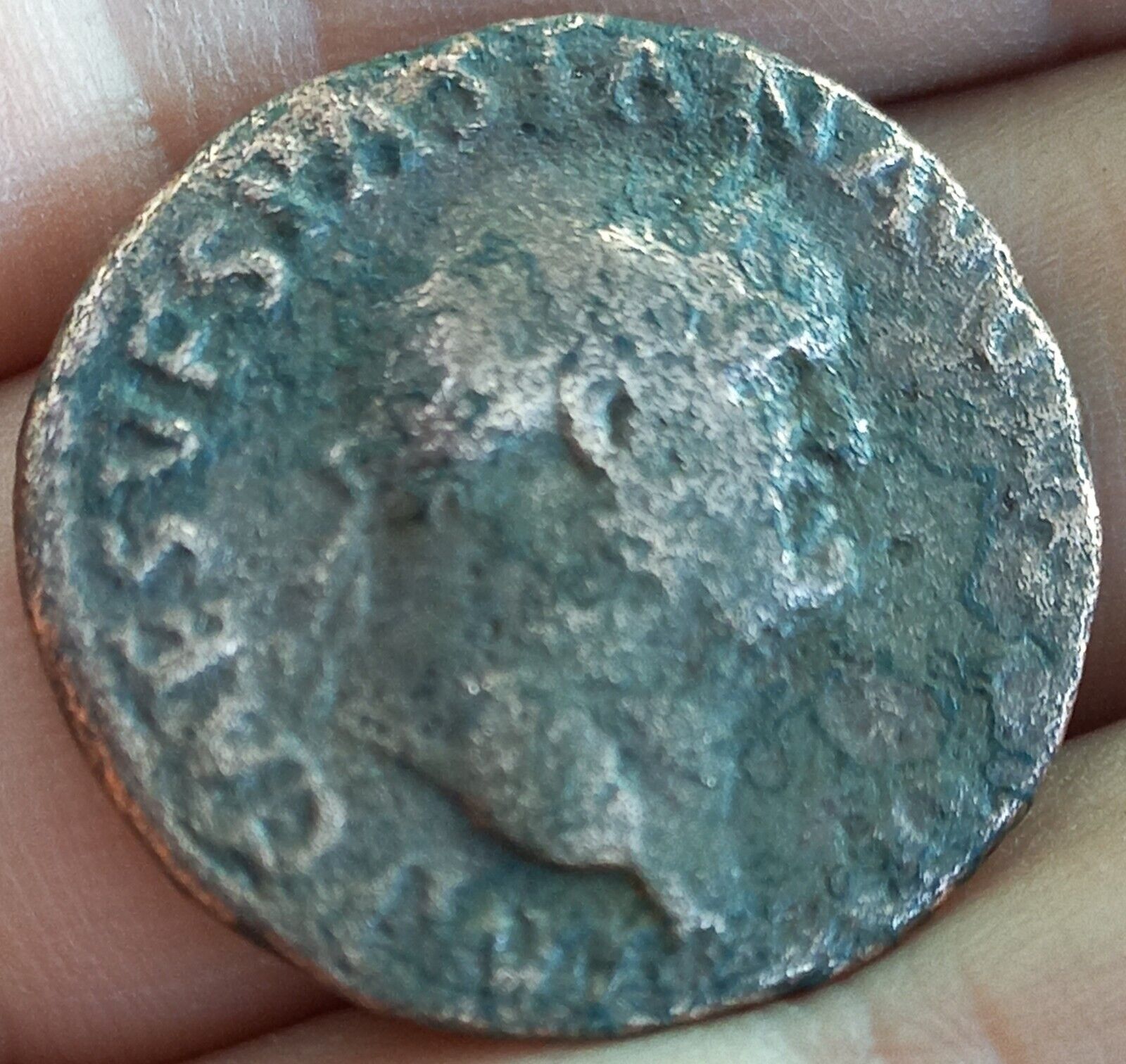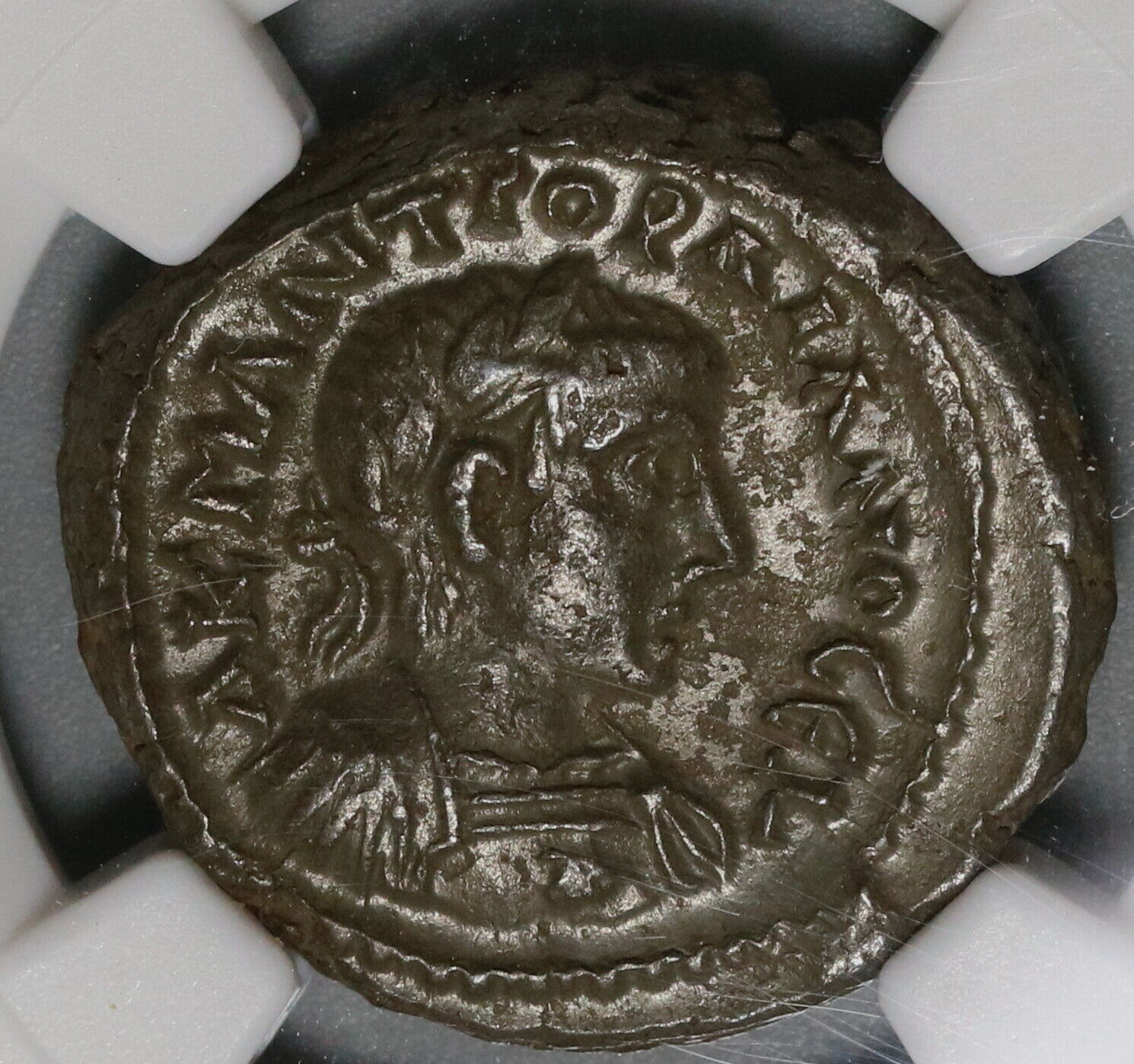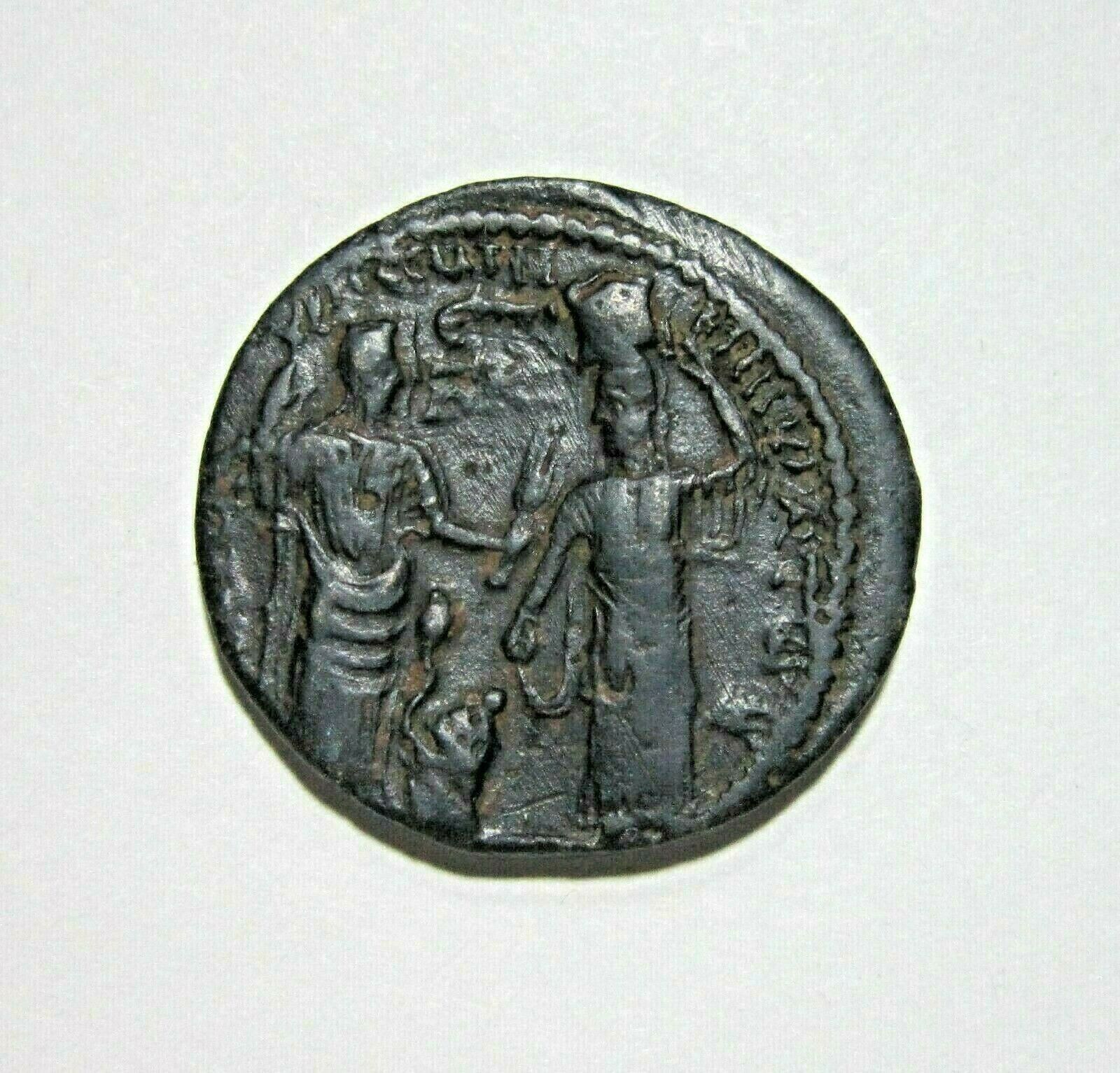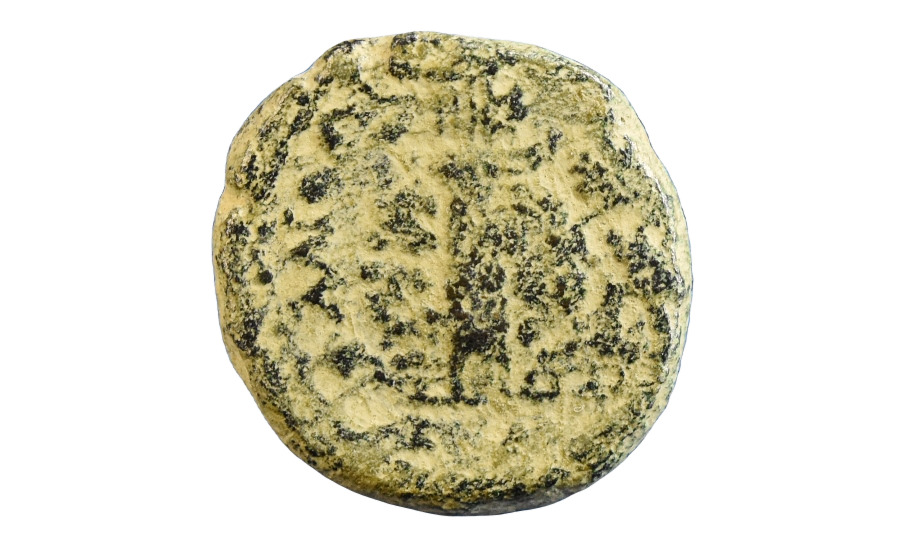-40%
SEBASTE SAMARIA ROMAN PROVINCIAL AE14 2.7g 6h DOMITIAN c84AD RPCII 2229 NICE
$ 39.59
- Description
- Size Guide
Description
SEBASTE SAMARIA ROMAN PROVINCIAL AE14 2.7g 6h (LARGE FOR THESE, WILDWINDS SAYS AE11) DOMITIAN c84AD RPCII 2229 ROSENBERGER 10 NICE STRIKEIMP DOMI CAES DOMITIAN R
CEBACTHNWN CRESTED HELMET WITH SIDE CHEEK PIECES
BEAUTIFUL ORANGE PATINA HIGHLIGHTS LETTERING (ESPECIALLY ON REVERSE)
A VERY RARE PROVINCIAL COIN...MOST OF THESE ARE THE SWORD TYPE, THE CRESTED HELMET IS MUCH RARER
I WILL SHIP OVERSEAS ONLY THROUGH THE GLOBAL SHIPPING PROGRAM
Samaria (or the Shomron) is a mountainous region west of the Jordan River in the northern section of the West Bank.
The name is Biblical in origin, stemming from the clan of Sheman.
It was established as the capital of the Kingdom of Israel in 884 BC.
It is mentioned several times in the Bible, including Luke 17, John 4 and Acts 8.
The temple at Mt. Gerizim was built circa 450 BC and was destroyed by the Maccabean, John Hyrcanus in 110 BC.
The Samarian descendants, who inhabited the area beginning with the Assyrian Exile of the Israelites, still worship among its ruins. The Bible tells the story in John of Jesus and the Samarian woman at the well.
The 1st mention of Sebaste is found when King Herod the Great changed the name of Shomron in honor of Augustus Caesar in 30 BC (Sebaste is the feminine form of the Greek Sebastos which means Augustus. It is believed that John the Baptist was buried in Sebaste. The city was rebuilt in the 2nd century by Septimus Severus. Julian the Apostate ordered the destruction of the tomb of John the Baptist in the 4th century. A church was built in the 5th century on the spot where they believed was the resting place of John and in the 12th century a Latin Cathedral was built east of the Roman forum to preserve the old Christian tradition. The city was 1st excavated in 1908.
Domitian was the 3
rd
and last emperor of the Flavian Dynasty. Born in 51 AD, his early life was spent in the shadow of his older brother, Titus, and although he was given titles, they came without responsibility. However, as emperor he revitalized Rome, expanding the border defenses and initiating a massive building project. He saw himself as the ‘New Augustus’ and exhibited totalitarian characteristics in nominating himself as ‘Perpetual Censor’ where he tried to control public and private morals. This made the Roman people view him as a tyrant, and he was assassinated by court officials and the Senate condemned his memory to oblivion. Modern numismatists are lucky that his coins survived the people’s hatred of him.
Important events in the year 84 AD: Gnaeus Julius Agricola defeats the Caldonians; Domitian recalls Agricola back to Rome where he awards him the Governorship of Africa, which he turns down; Construction of the Limes begins (a Roman fortress); Domitian increases military pay by 1/3 to gain support; End of Jianchu Era and beginning of Yuanhe Era; Deaths: Titus Flavius Sabinus, Roman Consul married to Julia Flavia (executed by Domitian)




